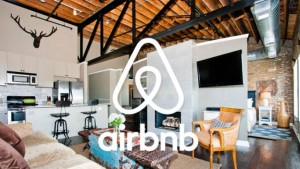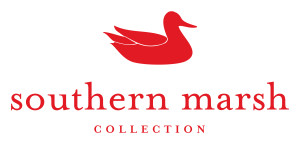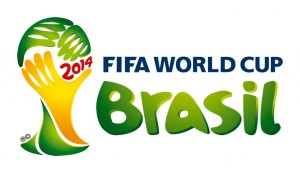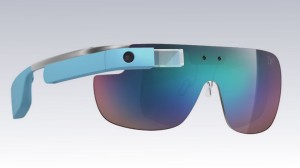A Colorful Response
Today we are excited to have a guest blog from our Director of Visual Branding, Cathleen Foley!
"What’s your favorite color?" is a common question I get asked as a graphic designer. I usually respond with, “Well, what is the color being applied to?"
Colors can make you feel a certain way. For instance, I like soft neutrals when it comes to painting my walls because it makes me feel calm, but bright red for a dress because I feel fun and exciting.” That’s my nerdy design answer to someone who was probably looking for a one-word answer like, “blue.”
But it’s true. In the article, What the Color of Your Logo Says About Your Company, Catherine Clifford states, “different colors are associated with different feelings.” She cites that 93% of purchasing judgments are made on visual perceptions and 84.7% of consumers cite color as their main reason for buying a particular product.
Based on those facts, when it comes to building a brand, choosing the right color is so important. I frequently urge clients to step away from the “I like” mentality, as color is subjective.
For example, just because you like the colors blue and black as a Carolina Panthers fan, doesn’t mean those colors are appropriate for your brand. (Side note: biases can creep into blog examples too – go Panthers!) According to the psychology of colors, if your brand is imaginative and creative, purple might be the best color. However, if your brand is sophisticated, black is an appropriate choice.
I agree that when choosing the right color for your brand, color psychology should be evaluated. However, it doesn’t stop there.
When deciding on a color for a brand, you should also audit the competitive color landscape and make a business decision if your brand wants to fit in or stand out. A bright orange in the midst of a sea of blue could make the new brand pop. However, a blue color palette would be appropriate and help a new brand build off of existing brand equity in the space.
So whether you’re developing a new brand color palette or answering the what’s-your-favorite-color question, you can now explain the psychology behind your response!
Addison Whitney is a global branding firm with a passion for building strong brands.
To learn more about Addison Whitney, visit our website at AddisonWhitney.com, or contact us here.
Gaining Brand Trust in a Share Economy
Today's post comes from guest blogger Caroline Lewis, Brand Strategy Intern at Addison Whitney
In the next 24 hours, nearly 1 million people around the globe will get in a stranger’s personal car using Uber. Over 800,000 will rent accommodations from private individuals with the help of Airbnb. Another 10,000 will lease a place for their pets to stay in someone’s home through DogVacay, and 10,000 more will hand their car keys over to an unfamiliar person using the car-sharing service, RelayRides.
Facilitated by smart phones and the internet, trusting consumers and the companies they use are considered part of the rapidly-growing “share economy,” which offers individuals the ability to exchange resources in a manner that would have been considered foolhardy just a few years ago.
The big question is: why are people placing so much trust in strangers?
This shift in consumer behavior is not caused by a business model trend, but a transformation of our society in the digital age. The economic effects of the global financial crisis of the 2000s have collided with the rise of social media, creating a culture in which we are not only driven by a desire to capitalize on unused resources, but also more open to the idea of sharing, even with complete strangers. This change has fueled an industry in which transactions rely on mutual trust and the exchanging of resources in a manner that benefits the common good.
The success of the share economy lies in how its brands cultivate trust. These brands focus their efforts on making consumers feel that they are interacting with people they can get to know, even if it is through the relative anonymity of the Internet.
Customer comments and ratings dominate web pages, creating atmospheres of credibility and trust between consumers and the brands. Many companies, such as Lyft (a transportation service similar to Uber), Airbnb, and RelayRides, recommend that users offering services connect their accounts to social media. Social media profiles reflect, at least in part, our real identities, and are therefore instrumental in building a more human persona, a strength for any brand.
The result has not only catapulted brands in the share economy space to booming success, but also changed the way that we view the strangers we interact with. Consumers are aware that they are  collaborating with real, individual people, creating a connection between brand, representative, and consumer unique to the share economy.
collaborating with real, individual people, creating a connection between brand, representative, and consumer unique to the share economy.
An Uber driver differs very little from a taxi driver in that both arrive to simply transport you to your destination. However, Uber’s consumers generally report feeling safer and more comfortable, and they are more likely to talk with drivers and sit in the front seat (or dance and sing with the driver, as seen here). With RelayRides, renters must meet the car owner to receive their keys. When RelayRides implemented this policy, satisfaction increased 40%, and users were more likely to keep the cars clean and return them on time. Interactions are between familiar faces, not complete strangers, and are beneficial to the brands, companies and individuals involved.
What does this mean for your brand?
Big or small, trust is essential. Consumers and customers are looking for innovative ways to get things done and want to trust the source – we see it in the share economy business trend, garden-to-table food trend, and home-schooling education trend. Build trust with your audience. Share feedback openly, let consumers get to know your brand ambassadors, salespeople, and customer service representatives in a real way. Let consumers be a part of the brand.
Image sources:
https://www.nytimes.com/2012/12/03/technology/app-maker-uber-hits-regulatory-snarl.html?_r=0
https://www.foxnews.com/travel/2015/04/22/10-things-need-to-know-about-airbnb-before-book/
Addison Whitney is a global branding firm with a passion for building strong brands.
To learn more about Addison Whitney, visit our website at AddisonWhitney.com, or contact us here.
New Traditions: The Trend of “Southern” Brands
Today's post comes from guest blogger Drew Maurer, Verbal Branding Intern at Addison Whitney
“Modern. Southern. Style.” This is the tagline for southern retail giant Belk, which could also easily describe a score of the men’s clothing manufacturers (many of whom have the word “Southern” in their names) sold within Belk stores.
Popular brands like Southern Proper, Southern Tide and Southern Marsh market themselves with a combination of a sense of heritage and a distinctly southern character to appeal to the collegiate and young professional market. This strategy has proven extremely successful, and these brands have become ubiquitous on college campuses and in post-grad life throughout the southeast.
One of the key strategies these brands have used to become successful is the way they’ve incorporated this aspect of their names throughout their brands to create distinct brand identities that resonate with consumers. The sense of southern identity and heritage embodied in the brand names extends throughout the brand identities.
For example, Southern Proper, a company that started out selling ties and caters specifically to the collegiate market, appeals to “history and heritage” throughout its brand literature, and brands its styles of ties with the names “beaus” and “gents.” They show how to take the ideals embodied by a brand name and extend them throughout the rest of the brand and product line to create a unified brand identity.
brands its styles of ties with the names “beaus” and “gents.” They show how to take the ideals embodied by a brand name and extend them throughout the rest of the brand and product line to create a unified brand identity.
Similarly, Southern Tide, who is also oriented towards a younger, collegiate demographic, describes its founding principles as “craftsmanship, clean lines, classic designs, and rich heritage” and  calls its flagship polo shirt the Skipjack. The company successfully leveraged this name into a coherent and consistent brand identity branding all their products with the distinctive skipjack logo, and appealing to the freedom of the ocean and “an affection for the coast” in their brand identity language, tying their product names, brand name, and company ethos together.
calls its flagship polo shirt the Skipjack. The company successfully leveraged this name into a coherent and consistent brand identity branding all their products with the distinctive skipjack logo, and appealing to the freedom of the ocean and “an affection for the coast” in their brand identity language, tying their product names, brand name, and company ethos together.
Southern Marsh, another brand that has built its brand identity around an evocative name and sense of southern heritage, appeals more directly to a certain  sense of leisure and comfort. On their website they characterize the Southern Marsh wearer as someone who wants to “escape the hustle and bustle of city life” and describes their customers as “the friends getting up at 4 a.m. to make it to the blind before sunrise.” Southern Marsh, like its competitors, sells a laid-back lifestyle built upon a sense of southern heritage and tradition.
sense of leisure and comfort. On their website they characterize the Southern Marsh wearer as someone who wants to “escape the hustle and bustle of city life” and describes their customers as “the friends getting up at 4 a.m. to make it to the blind before sunrise.” Southern Marsh, like its competitors, sells a laid-back lifestyle built upon a sense of southern heritage and tradition.
Despite their relatively recent emergence (all three were founded in the past decade), these brands have successfully leveraged a distinct sense of southern heritage into a profitable and prominent following among collegiate and younger professional men.
All of these brands have specifically used strong focused naming strategies to build their brand identity and equity. By starting with evocative names like Southern Proper, Southern Tide, and Southern Marsh, and building brands around those images, these companies have been able to sell a sense of comfort and familiarity that is unique.
They cultivate an image that is masculine, but not rugged, stylish without being trendy, and classic, but not stuffy. Characterized by bright colors, bold patterns and clean lines, these are pieces designed to transition seamlessly from the office to happy hour to a summer barbecue, and look great along the way.
Image Sources:
Feature Image
Southern Marsh Logo
Southern Tide Logo
Southern Proper Logo
Addison Whitney is a global branding firm with a passion for building strong brands.
To learn more about Addison Whitney, visit our website at AddisonWhitney.com, or contact us here.
Google's New Alphabet
Today's post comes from guest blogger John Lineberger, Brand Strategy Associate at Addison Whitney
Seventeen years ago the world was introduced to an internet search engine with a funny name.
Between then and now that search engine would become one of the largest companies in the world, spawning a number of household software names, a movie, and that funny name would change from a noun to a verb. Nowadays, what started as the most intuitive internet search engine to date has begun to execute on ideas previously seen only in The Jetsons and Star Trek—from self-driving cars and internet drones, to cancer-detecting bracelets and lifespan advancement technology.
This week, Google (which is, of course, the aforementioned company) announced that it will make another step forward. Google will still be Google, albeit a slimmed down version; but its former subsidiaries will become its brothers and sisters, and there for the first time, Google will be under the umbrella of another brand. The overarching parent role previously held by the Google brand is being transitioned to a newly created brand called Alphabet, a reference to all of the companies within it being “the letters” in the greater structure.
Former functions of the Google name such as Fiber, Google Ventures, and Calico will now be mentioned alongside the former master brand, rather than under it. Management teams and new CEOs will have direct control over these companies that used to be under the direct influence of Google. This change is coming for one big reason: the founders of Google, now CEO and President of Alphabet, understand the value of brand architecture.
Restructuring the portfolio may seem risky. We all know these subsidiaries of Google as exactly that—subsidiaries of Google. With such prominent brand awareness, what if cutting ties hurts the credibility of these products? What if some faith is lost in the efficacy of these companies as new executive teams are put in place and each has more autonomy? This is a move never seen before within the major market powers.
However, the benefits far outweigh the risks. Some still solely associate Google with its first innovation, the search engine. Over the years it has grown and evolved into so much more. The brand equity of every company in the Alphabet umbrella is strong. By making them independent under a holding company, their individual brands can only breathe and grow. The diversity of the companies sprouting under the Google name was such that it didn’t make sense to keep an automated drone company or a digital contact lens company tied up in the Google name. By allowing these companies room for separation, they are now able to grow into unique, effective brands independent of Google and its connotations.
In a more concrete sense, the move allows investors to see all of the different companies in a more disparate lens. Google will still be the largest and most profitable company in the Alphabet portfolio, but investors can now look and understand where revenue is coming from and recognize the fact that some of the newer companies will not be profitable for a few years. The move also allows for easier new company acquisition and spin-off.
Staying conscious of the architecture of one’s company can be crucial to its success. As with all aspects of branding, it can be an overlooked process in the course of a company’s development; and can be even more overlooked than such devices as naming, positioning and messaging due to its tendency to be a little less sexy. Initially, much of the coverage was centered on the name, and less so around the strategic decision. However, we see here how brand architecture can be a beneficial and proactive step.
And for those a little bit uncomfortable with seeing such a change from an old standby to this new Alphabet, just remember: G is for Google.
Image Source: https://money.cnn.com/2015/08/10/technology/alphabet-google/
Addison Whitney is a global branding firm with a passion for building strong brands.
To learn more about Addison Whitney, visit our website at AddisonWhitney.com, or contact us here.
A Thermostat to Rule Them All
A year ago, would anybody have thought that the product development we saw this year at CES would be inspired by an innovation to, of all things, a thermostat? Yes, a thermostat.
This thermostat was introduced by a brand called Nest, of which I am a big fan. I don’t own one, but I do look at them longingly on my trips to Home Depot. The brand’s first blog entry clearly explains why thermostats were the choice for innovation: heating and cooling costs make up about 50% of an energy bill, and therefore were a logical place to try and find solutions for homeowners. Also, it’s pretty.
At this year’s CES, there were a number of new innovations introduced that were related to the Nest thermostat idea. The Aurora Sleep System will tell your thermostat when you go to sleep and when you wake up, allowing the thermostat  to customize the temperature to fit your needs. Whirlpool introduced a dryer that can help keep your clothes fresh and wrinkle-free while you’re away, or even delay cycles during peak energy times. The Kevo Smart Lock can tell Nest who is entering the home and what temperature they like.
to customize the temperature to fit your needs. Whirlpool introduced a dryer that can help keep your clothes fresh and wrinkle-free while you’re away, or even delay cycles during peak energy times. The Kevo Smart Lock can tell Nest who is entering the home and what temperature they like.
This is amazing. Think about it. A thermostat. Something that is present in nearly every consumer’s home, but often not given a second thought until it doesn't work. But Nest truly is more than just that. It is bringing the thermostat into the list of must-have for the latest and greatest technology, along the lines of the TV and computer industries. Additionally, it really was the first major entrant into the “smart home” accessible at the consumer level.
The smart home concept is a brand of the “Internet of Things” concept, focusing on how a variety of devices can increase connectivity of the “things.” A number of keynote speeches at this year’s CES  focused on Internet of Things-related topics, much like a few keynotes did last year. And while general consumers may still be learning this term, they do understand the value of connection. And a consumer understands the benefit of energy efficiency, especially when it affects monthly budgets. It will be interesting to see what other innovations come to market that work specifically with Nest, or whether there are other brands who take the lead in the space.
focused on Internet of Things-related topics, much like a few keynotes did last year. And while general consumers may still be learning this term, they do understand the value of connection. And a consumer understands the benefit of energy efficiency, especially when it affects monthly budgets. It will be interesting to see what other innovations come to market that work specifically with Nest, or whether there are other brands who take the lead in the space.
An interesting aspect of the Internet of Things perspective is that, in reality, it doesn't qualify as an innovative idea. It’s not a thought that is brand new, the cause of light-bulb moments for companies around the world.
In fact, from a B2B standpoint, the Internet of Things has impacted innovation leading to more efficient ways to gather data, and then leverage and use this data to make better decisions. Amazing case  studies about the London Underground or GE’s Industrial Internet used with locomotives can be found across the Web. From a consumer standpoint, the market has been trending toward the connectivity of devices big and small, from those for whom a connection seems obvious to devices you never thought should or would be connected (i.e., a bedside table light you can turn on with your smartphone – even when there is a chance you would be reaching PAST the light to grab your phone to turn on said light).
studies about the London Underground or GE’s Industrial Internet used with locomotives can be found across the Web. From a consumer standpoint, the market has been trending toward the connectivity of devices big and small, from those for whom a connection seems obvious to devices you never thought should or would be connected (i.e., a bedside table light you can turn on with your smartphone – even when there is a chance you would be reaching PAST the light to grab your phone to turn on said light).
But connectivity is quickly shedding its “trend” status and showing that it will be a leading factor for a long time in product development. The consumer is becoming more and more reliant on a few products that will control their lives, whether it be a smartphone, tablet, or yes, a thermostat.
I do have one more question – How will Dads around the world react to this loss of control of the thermostat?!
Sources:
https://nest.com/blog/2011/10/25/thermostats-yes-thermostats/
https://www.fastcolabs.com/3030367/the-london-underground-has-its-own-internet-of-things
https://www.fastcompany.com/3031272/can-jeff-immelt-really-make-the-world-1-better
https://www.youtube.com/watch?v=1Pwwx1cF8NQ
Follow us on Twitter @AddisonWhitney or join the conversation on Facebook and Google+
Chubbies is a men’s online clothing retailer that I, a female customer, look forward to perusing when shopping for the men in my life. The Chubbies brand has reinvigorated shorts for men.![]() Their aesthetic is unique - slightly tailored and boldly patterned, complete with their signature short inseam. As my brother famously says, “They don’t call them longs!”
Their aesthetic is unique - slightly tailored and boldly patterned, complete with their signature short inseam. As my brother famously says, “They don’t call them longs!”
One of the goals of the brand is to outfit men in shorts for every occasion; they have shorts for summer, winter, tailgate and formal occasions. And though the style of the shorts is notable, the lifestyle that Chubbies promotes is really what we’re all really buying into.
Chubbies has clearly defined what it is to be a “bro” in a world filled with nine-to-fivers and squares - and if you fit that description, Chubbies shorts allow you to live a double life. As they promise their customers, “When you put on your Chubbies, you know it's time to relax, crack open an ice cold beer, and have some fun.”
This "bro"  mentality is promoted through witty website copy that feels more like friendly banter among friends than standard fare copy for a website. Chubbies shorts have names like “The Khakmeisters,” “The Clubmander in Chiefs,” and “The Victory Bells.” Their tagline, “sky’s out, thighs out,” clearly illustrates when they feel is the most appropriate time to wear Chubbies shorts- always.
mentality is promoted through witty website copy that feels more like friendly banter among friends than standard fare copy for a website. Chubbies shorts have names like “The Khakmeisters,” “The Clubmander in Chiefs,” and “The Victory Bells.” Their tagline, “sky’s out, thighs out,” clearly illustrates when they feel is the most appropriate time to wear Chubbies shorts- always.
Not a big reader? Chubbies has you covered on their website, www.chubbiesshorts.com, with humorously epic photos. Picture a shirtless fellow on the ridge of a ski slope: his phy
sique is average, his stance is confident and comically determined, his Chubbies have an 1980s-inspired ski motif. Or, imagine a clean-cut patriotic gent running down the beach, proverbial guns blazing, in American Flag print shorts. A flag in on hand, a beer in the other, ‘Merica.
Customer communications also follow suit. If you decide to give the company a call, a real-live guy picks right up and says “Hey dude, what’s up?” No automatic, robot-voice activated customer service shenanigans. Chubbies email order confirmations flaunt phrases like “You done did it!”
Even their FAQ page is packed with branded gems such as, “Men of genius are admired, men of wealth are envied, men of power are feared; men wearing Chubbies are all of the above.”
The Chubbies brand is a success because they don’t just dabble in this “bro” persona, they embrace if from all angles.
In short (pun intended), the Chubbies experience is unexpectedly inspiring. Though they’re selling men’s clothing, the Chubbies concept is gender-less and timeless - fearlessly seize the day in shorts and a smile. It’s enough to make anyone want to crack open a cold one and set sail on the next schooner to YOLOland.
All images via chubbiesshorts.com
January 6, 2015
Adidas vs. Nike, Which Brand Really Won The World Cup?
Adidas vs. Nike, Which Brand Really Won The World Cup?
Guest Blogger: Lindsey Freedman
The FIFA World Cup, like all large scale sporting events, is every brand’s dream platform. It gives a brand the potential to be recognized on a global platform while influencing the opinions of millions. The 2014 FIFA World Cup was no different-over $400 million were spent on marketing during the tournament.
What makes the 2014 World Cup so different than past years is that brands have to focus on reaching target audiences across multiple platforms. Jason Klein, ListenFirst’s co-founder and Co-CEO, said, “More than ever before, this year's World Cup forced brands to think beyond a single platform and instead take a cross-channel approach to engaging fans throughout the tournament."
Adidas and Nike were the most competitive brands across the multiple online platforms during the 2014 World Cup, despite the many sponsors that included McDonalds, Coca Cola and Sony. What’s so interesting about Adidas and Nike is that Adidas was a 2014 World Cup sponsor, while Nike was not.
Below are some notable reasons why Adidas and Nike were the “winning” brands of the 2014 FIFA World Cup:
Adidas:
For the past 66 years, Adidas has been the leader in soccer products. So, their World Cup sponsorship makes sense for the brand. Adidas was no doubt the most notable sponsor of the World Cup. Their signage and logo were prominently displayed throughout all the stadiums. They even inspired athletes with their “Now or Never” signage that intensified throughout the matches. Adidas also created a Twitter campaign for @Brazuca, the 2014 FIFA World Cup official match ball. Throughout the tournament the account grossed 3.5 million followers. Additionally, both World Cup finalists, Germany and Argentina, were sponsored by Adidas.
Nike:
Nike, on the other hand, was not a 2014 World Cup sponsor but their presence was well known. Their brand strategy was to sponsor multiple teams and distinguished players for the World Cup. However, Adidas happen to pick the right teams to sponsor in terms of the World Cup final. Furthermore, Nike’s “Winner Stays” video, that featured multiple renowned athletes such as Cristiano Ronaldo, Wayne Rooney and Tim Howard, reached more than 4.2 million views.
ListenFirst, a social analytics company, tracked the growth of brands during the course of the tournament through impacts on social communities, including Facebook, Twitter, Instagram and Youtube. Adidas scored a 90.4 while Nike scored a 83.4 indicating that both brands enjoyed substantial and comparable growth throughout the 2014 World Cup. According to the data Adidas was the most talked about brand on Twitter, whereas Nike scored big on Youtube views.
But overall, if a winner had to be declared - we’d say we have got a tie. Despite the millions of dollars spent on Adidas and Nike’s campaigns, they both scored a larger audience that they will be able to influence year-round.
On a side note, Tim Howard, USA goalie, has become a powerhouse brand. He gained over half a million Twitter followers during the World Cup and at one point he was mentioned 55,187 times a minute during the match against Belgium. Howard is in talks with several brands for multi-million dollar sponsorship opportunities, according to a recent interview with ADWEEK.
The FIFA World Cup is definitely one of our favorite events. No one wants to wait another four years, but we look forward to what brands bring to the 2018 World Cup in Russia.
###
Sources:
"The 10 World Cup Sponsors That Grew the Most in Followers, Fans and Subscribers"- Ad Age
"Adidas won the World Cup battle, but Nike is winning the soccer wars"- Quartz
"Three Brands That Won At The World Cup" - Forbes
"World Cup Hero Tim Howard Talks About Sudden Fame Being a role model is part of the package" - ADWEEK
Build Equity in Your Personal Brand
Build Equity in Your Personal Brand
By Guest Blogger: Lindsey Freedman 
Today as I walked into work, I couldn't help but notice the Starbucks cup in my hand, the iPhone I was texting on and the Nike fuel band on my wrist. As a society we are fixated with brands; we are walking advertisements for the brands we love. However, do these certain brands define our own personal brand?
Personal branding is a phrase that has been tossed around a lot lately. But what is it? Is it the items we associate ourselves with, or the profiles we manage on the internet? Forbes says, “Your personal brand is all about who you are and what you want to be known for.”
To be competitive in today’s work force a personal brand is essential. Personal branding is more than a strategic social media presence. It is defining who you are and what your goals are while establishing authenticity. “Authenticity is as essential an ingredient to personal branding as eggs are to omelets,” says William Arruda, a Forbes contributor.
A personal brand is important because it advances careers, develops leadership and builds equity. A Forbes survey determined that 15 percent of employees have truly defined their personal brand, while 5 percent are living their brand every day at the workplace. Glenn Llopis, a Forbes writer, says that living through the “lens of the brand” will help one become aware of their presence.
To positively construct your personal brand there are a number of factors to consider and business objectives to define. Below are just a few tips for establishing your personal brand:
1. Discover your brand mantra
A brand mantra is the “heart and soul” of your brand according to professional Kevin Keller. It is an important step in defining your personal brand. A brand mantra is reminiscent of a mission statement. An example would be Oprah Winfrey: “an American television hostess, entrepreneur and avid gardener”. This will help define the foundation of your brand and your intended message.
2. Create your brand
Creating a personal brand includes executing paper and online initiatives. It is important to examine all social media platforms and create a consistent voice and message. According to Career Builders, 48 percent of employers Google candidates’ online portfolios and social media platforms. Additionally, 51 percent of employers have not hired a candidate because of their social media profiles, according to Bloomberg Business Week. Therefore, online portfolios that are strategic and consistent are more important than ever. The same idea goes for print work that includes cover letters, resumes and business cards. A consistent message across multiple platforms will only enhance your personal brand’s identity.
3. Invest in your own brand
After determining your brand, it is important to be consistent and believe in your message. “In fact, those who have defined and live their personal brand will more naturally demonstrate executive presence and as such may find themselves advancing more quickly at work,” says Llopis. Executing your brand consistently is a leadership quality and will help define your career and goals moving forward.
For more tips on personal branding examine the A,B,C’s of Personal Branding infographic provided by Placester and Feldman Creative. Here at Addison Whitney we love watching brands become successful and thrive. So why shouldn't your own personal brand gain the same benefits?
###
Sources
"The First Step to Building Your Brand"- Forbes
"Personal Branding Is A Leadership Requirement, Not a Self-Promotion Campaign"- Forbes
"7 Questions To Ask When Uncovering Your Personal Brand"- Forbes
"New Survey Reveals Job Interview Stats: 48 Percent of Employers Google Candidates"- Media Bistro
"Number of Employers Passing on Applicants Due to Social Media Posts Continues to Rise, According to New CareerBuilder Survey"- Bloomberg Buisnessweek
Brand Collaborations: The Innovative Movement in Branding
Brand Collaborations: The Innovative Movement in Branding
Guest Blogger: Lindsey Freedman
Google Glass & Diane von Furstenberg, Starbucks & Duracell, Hershey & Betty Crocker, are all examples of popular brand collaborations. As discussed in our previous post on Fitbit and Tory Burch, brand collaborations are occurring more because of the potential effects on brand equity and expanding target audiences.
According to Michelle Greenwald of Inc., this trend began in the 1990s when Lexus offered interior options by famous fashion retailer, Coach. Fast forward to 2014 and this trend now expands through numerous industries including retail, cosmetics, healthcare, food and more.
Brand collaborations, or partnership marketing, provides exposure across multiple brand channels and expands target audiences. The study also shows that co-branding enhances brand positioning, challenges perceptions and advances brand equity.
For example, a recent study by Mediator, a London- based agency, revealed that 80 percent of respondents consider collaborations a high return on investments. Furthermore, 83 percent of respondents agree that collaborations are overall effective.
To successfully collaborate with another brand there are a number of factors to consider and business objectives to define but below are some tips for valuable co-branding endeavors:
1. Align your corporation with a comparable organization.
The most successful brand collaborations involve corporations that share similar visions. Mutual interests create an authentic relationship that is easily received by target audiences. For example, Apple and Nike’s Nike +iPod Sports Kit fulfilled a deficit in the fitness market. Both corporations are leaders in their respective industries, thus their collaboration expanded audiences. As of 2013 there were 18 million Nike+ users and the collaboration has been on-going since 2006.
“Look for brand fit not only from the perspective of attributes and benefits but also with respect to core values and corporate philosophies,” said Steve McKeee, President of Mckee Wallwork and a Bloomberg Business columnist
2. Outline goals that compliment both brands.
A clear set of goals will guide and organize the business endeavor. Also, mapping out shared interest will focus the collaboration. It is important to develop goals and guidelines that align with your own business practices and ethics. This will help create a swift transition and protect your own brand. A great tool is a co-branding manual; many corporations, such as AT&T, have co-branding guidelines to help direct managers.
3. Use brand collaborations cautiously and sparingly.
Research is the key to creating valuable brand collaborations. Brand collaborations have the potential to be unbelievably successful and develop further brand equity. However, if executed incorrectly they can have a dramatic effect on your audience’s perceptions. Research is important when aligning with another organization to avoid negative partnerships.
Co-branding endeavors add a level of engagement that traditional communications strategies are not able to provide. They create a powerful effect across multiple marketplaces. Do you think this trend strengthens brand equity, or will this movement soon fade out?
###
Sources
"Whitepaper by Mediator"- The Drum
"Twenty Co-branding Examples" - Bloomberg Business Week.
"The Pro's and Con's of Branding"- Bloomberg Business Week.
"The Secrets of Successful Co-Brands"- Inc.
"4 Lessons on Co-Branding To Co-Crush The Competition"- The Fast Company
"18 Million People are Using Nike+ to Track Their Fitness"- The Fast Company
Taking Your Brand Online
Taking Your Brand Online
By: Ashley Wiederhold
The Internet is really quite a fascinating space. You can find virtually any piece of information that you may need online—and this includes information about companies that you may be considering working with. Anyone, at any time, can do a quick Google search of a business name and gain access to the company’s website, social media feeds, blog, etc. Basically, any online asset that a company has can be uncovered by the right Google search.
If your business has great branding in place, this is fantastic! Each and every webpage that features your company supports its message (if these pages are branded correctly). But for those businesses that have overlooked branding? Or have  overlooked how to best take their brands online? This can be challenging.
overlooked how to best take their brands online? This can be challenging.
The key to creating a brand that will successfully translate to the World Wide Web lies in preparation. Below are some of the ways in which you can ensure that you build a brand message that can be easily applied online.
- Think about the name. On brand name development projects, any good branding firm will do a preliminary Google screening of your potential name candidates, thereby weeding out the names that may already be taken or associated with ideas, events, people, companies, etc. When considering names, do your own Google searches to make sure that nothing in the search results will hinder the effective communication of the brand you’re building.
- Remember that consistency is key. Online marketing is essential in today’s world, but it’s only effective if you use your brand to create a high degree of recognition. This means that members of your target audience will recognize your company based on the logo, the tagline, etc. To achieve this, it’s important to keep in mind the fact that your brand message will be spread across many platforms. From a blog to social media to the business’ website, your branding materials need to be consistent.
- During the creation of your brand you should identify your target audience, as well as its values, priorities, etc. Use this information to shape your company’s Internet-based marketing efforts. Keep the brand you are building, as well as your online marketing goals, in mind in order to create a message that resonates with the target demographic.
Source:





